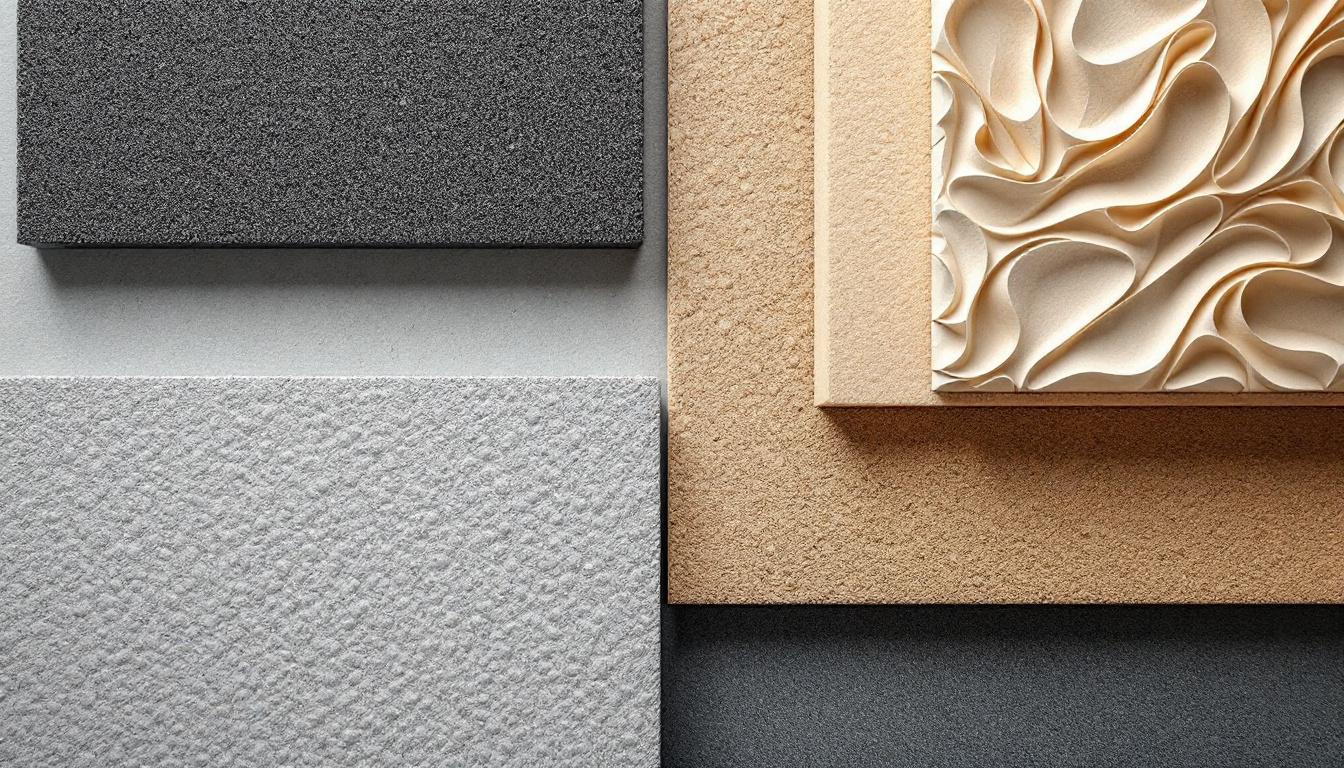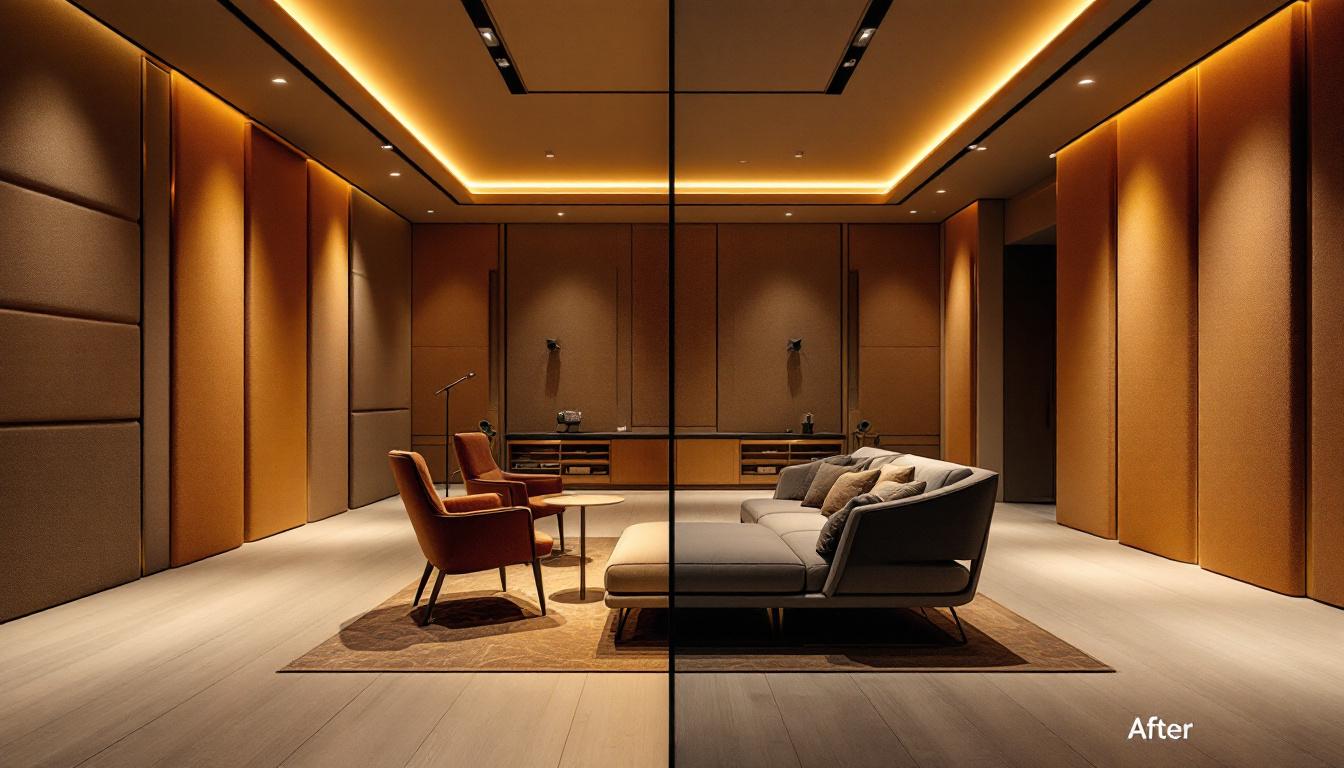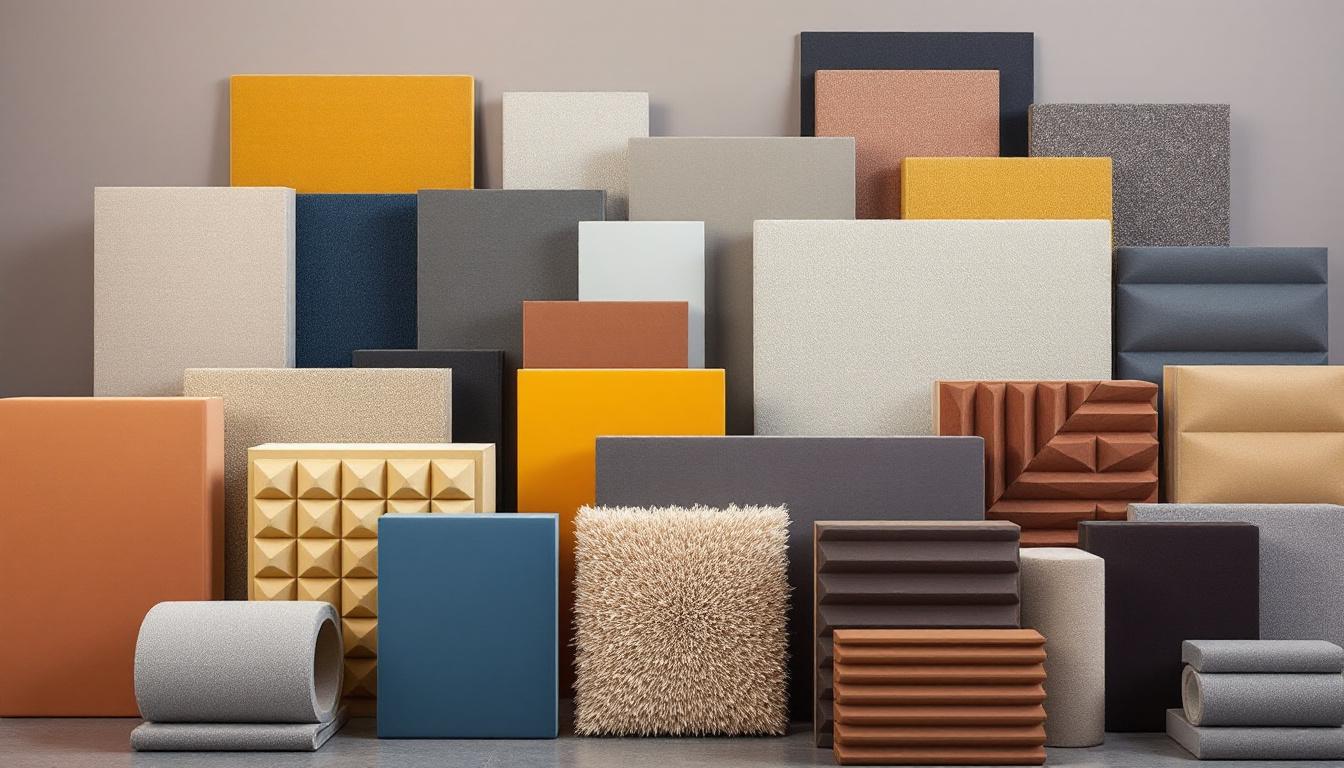Imagine walking into a room where your voice bounces around like a ping-pong ball on a trampoline. Now imagine stepping into a space where your words gently settle, like a whisper carried on a calm breeze. That’s the magic of acoustic treatment—specifically, the difference between diffusion and absorption. But when should you invite each to your sound party? Let’s break down the science, the art, and the downright practical wisdom behind acoustic diffusion and absorption.
Understanding the Basics: What Are Diffusion and Absorption?
Acoustic Absorption: The Sound Sponge
Acoustic absorption is like the introvert of the sound world. It quietly soaks up sound waves, preventing them from bouncing around the room and creating echoes or reverberations. Materials like foam panels, fiberglass insulation, and heavy curtains are common absorbers. They convert sound energy into a tiny bit of heat, effectively reducing the amount of reflected sound.

Think of absorption as putting a cozy blanket over your noisy room, muffling those wild sound waves so they don’t crash into your ears repeatedly. This is especially useful in spaces where clarity is king—like recording studios, home theaters, or conference rooms. In fact, the effectiveness of acoustic absorption can be quantified using the Noise Reduction Coefficient (NRC), which measures how much sound a material can absorb. A higher NRC value indicates better absorption, making it a crucial factor in designing spaces meant for optimal sound quality.
Moreover, the placement of these absorbing materials plays a significant role in achieving the desired acoustic effect. Strategic positioning can enhance the overall sound experience, especially in larger spaces where sound waves may take longer to travel. For instance, placing absorptive materials at first reflection points—where sound waves first bounce off surfaces—can drastically improve clarity and reduce unwanted echoes. This thoughtful approach to sound management not only enhances auditory experiences but also contributes to a more comfortable and inviting atmosphere.
Acoustic Diffusion: The Sound Juggler
Diffusion, on the other hand, is the social butterfly. Instead of swallowing sound waves, it scatters them in many directions. This scattering prevents harsh echoes and dead spots by breaking up the sound energy and distributing it evenly throughout the room.
Diffusers are often made from wood, plastic, or specially designed materials with irregular surfaces—think of those funky-looking panels with ridges, wells, or pyramids. They don’t kill the sound; they just spread it out, making the room feel more lively and natural. The beauty of diffusion lies in its ability to maintain the richness of sound while enhancing the overall acoustic experience. This is particularly important in performance spaces, where a full, vibrant sound is essential for both performers and audiences alike.
In addition to their aesthetic appeal, diffusers can also serve a practical purpose in managing sound in complex environments. For example, in a concert hall, diffusers can help to ensure that sound reaches every corner of the audience evenly, preventing the dreaded “hot spots” where sound is overwhelmingly loud and “cold spots” where it fades away. By carefully designing the shape and placement of diffusers, acousticians can create spaces that not only sound great but also feel balanced and immersive, enhancing the emotional impact of the performances held within them.
Why Does It Matter? The Impact on Your Space
When Absorption is Your Best Friend
Absorption is crucial when you want to reduce reverberation time—basically, how long sound lingers in a room after the source stops. Long reverberation times can make speech unintelligible and music muddy.

For example, in a podcast studio, you want your voice to sound crisp and clear without that annoying echo bouncing back at you. Absorptive materials help achieve this by taming reflections. Similarly, in noisy open-plan offices, absorption reduces overall noise levels, making it easier to concentrate.
Diffusion: Keeping Things Alive Without Chaos
While absorption can sometimes make a room feel “dead” or lifeless, diffusion keeps the acoustic environment natural and pleasant. Diffusion is ideal in spaces where you want to maintain a sense of spaciousness and airiness—like concert halls, jazz clubs, or living rooms with high-end audio setups.
Imagine sitting in a concert hall where the sound wraps around you, coming from all directions but never overwhelming. That’s diffusion at work, creating a balanced acoustic experience that’s neither too echoey nor too dull.
When to Choose Absorption Over Diffusion (and Vice Versa)
Small Rooms and Home Studios: Absorption Often Wins
In compact spaces, sound waves bounce rapidly between walls, creating flutter echoes and standing waves that can ruin recordings or listening experiences. Here, absorption is your go-to solution. Placing absorptive panels at reflection points—like the walls behind speakers and opposite reflective surfaces—can dramatically improve sound clarity.
That said, too much absorption can make the room feel unnaturally quiet. So, a little diffusion might be sprinkled in to maintain some liveliness, but absorption generally takes the lead in small rooms.
Large Rooms and Performance Spaces: Diffusion Takes the Stage
In bigger spaces, total absorption is neither practical nor desirable. Instead, diffusion helps manage reflections without deadening the room. For instance, in a theater or auditorium, diffusers can prevent echoes while preserving the natural reverberation that gives music and speech their richness.
Diffusion also helps avoid “acoustic shadows,” where certain spots in the room receive less sound energy. By scattering sound waves, diffusers ensure a more uniform listening experience for everyone.
Hybrid Approaches: The Best of Both Worlds
Most real-world acoustic treatments use a combination of absorption and diffusion. For example, a recording studio might use absorption panels at early reflection points and diffusers on the rear walls to keep the room sounding natural.
Even your favorite coffee shop probably benefits from this combo—absorptive materials reduce noise levels, while diffusers prevent the space from sounding like a vacuum-sealed box.
Materials and Placement: Getting Your Hands Dirty
Popular Absorptive Materials
Some of the most common absorptive materials include:
- Acoustic foam: Lightweight and easy to install, great for mid to high frequencies.
- Fiberglass panels: Denser and more effective across a broader frequency range.
- Mineral wool: Similar to fiberglass but often more environmentally friendly.
- Heavy curtains and carpets: Simple, budget-friendly options that absorb sound.
Placement is key. Focus on first reflection points—places where sound bounces directly from speakers to walls and then to your ears. Using a mirror to find these spots is a classic DIY trick.
Diffusive Materials and Designs
Diffusers come in various shapes and sizes, including:
- Quadratic Residue Diffusers (QRD): These use mathematical sequences to scatter sound waves evenly.
- Skyline diffusers: Blocks of varying heights that scatter sound in multiple directions.
- Primitive diffusers: Simple geometric shapes like cubes or pyramids arranged irregularly.
Wood is a favorite for diffusers due to its natural acoustic properties and aesthetic appeal. Placement is typically on rear walls or ceilings, where reflections would otherwise cause problems.
Common Myths and Misconceptions
“More Absorption = Better Sound”
Not necessarily. Over-absorbing a room can make it sound dead and unnatural. It’s like turning off all the lights in a room to avoid glare—you lose the ambiance. A balanced approach, mixing absorption and diffusion, usually yields the best results.
“Diffusion Only Works in Big Rooms”
While diffusion shines in larger spaces, it can also improve acoustics in smaller rooms when used thoughtfully. For example, a small home theater might benefit from a diffuser on the back wall to prevent slap echoes.
“Foam Panels Are Absorbers and Diffusers”
Foam panels primarily absorb sound, especially mid to high frequencies. They don’t diffuse sound because their surfaces are too uniform. So, if you want diffusion, you’ll need something with more complex geometry.
Practical Tips for DIY Acoustic Treatment
Start with a Listening Test
Before buying anything, spend time listening to your space. Clap your hands, speak loudly, or play familiar music. Notice where echoes or muddiness occur. This will guide your treatment choices.
Use the Mirror Trick
Have a friend move a mirror along the walls while you sit in your listening position. Wherever you see the speaker’s reflection, that’s a first reflection point—prime real estate for absorptive panels.
Don’t Forget the Ceiling and Floor
Sound reflects off all surfaces, not just walls. Consider absorptive rugs or carpets and ceiling panels if your budget allows.
Mix and Match
Combine absorption and diffusion to avoid a sterile or overly lively room. Start with absorption at early reflection points and add diffusion where reflections cause issues further back.
Keep It Aesthetic
Acoustic treatment doesn’t have to look like a science experiment. Many companies offer stylish panels and diffusers that double as wall art. Your ears and your eyes will thank you.
Choosing Your Acoustic Allies
Acoustic diffusion and absorption are like peanut butter and jelly—each delicious on its own, but magic when combined just right. Absorption tames the wild echoes and reverberations, making speech intelligible and recordings clean. Diffusion keeps the sound lively and natural, preventing the room from feeling like a soundproof bunker.

Whether you’re a musician, podcaster, audiophile, or just someone who hates shouting across the room, understanding when and where to use diffusion and absorption will transform your space from an echo chamber into an acoustic haven.
So next time you hear your voice bouncing back at you like a hyperactive rubber ball, remember: a little absorption here, a bit of diffusion there, and you’ll be rocking the perfect soundscape in no time.